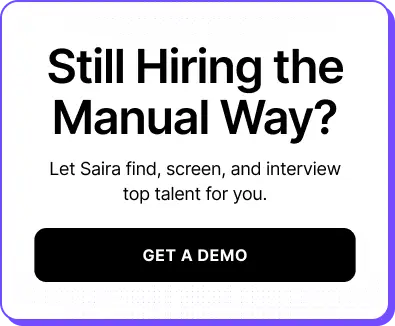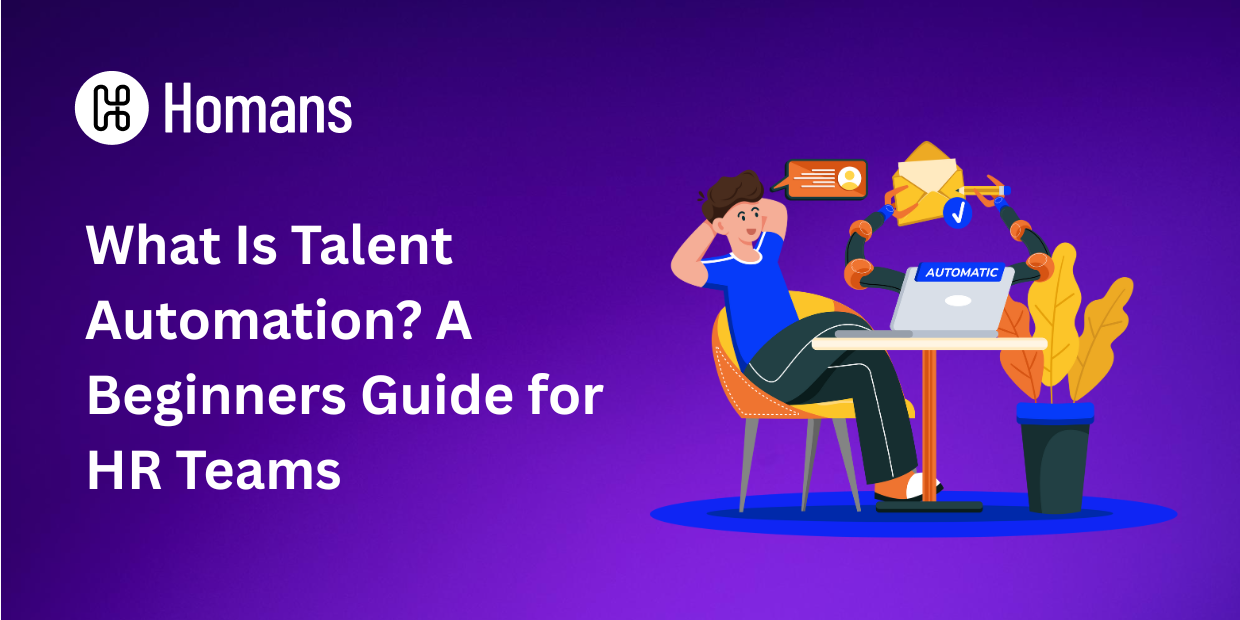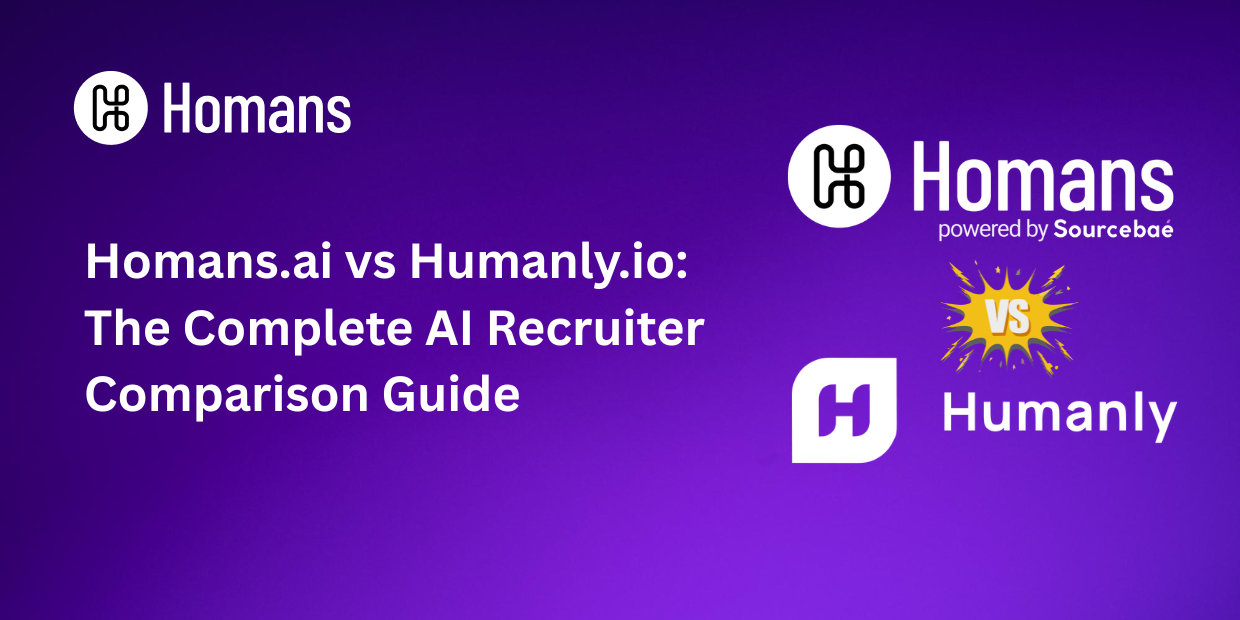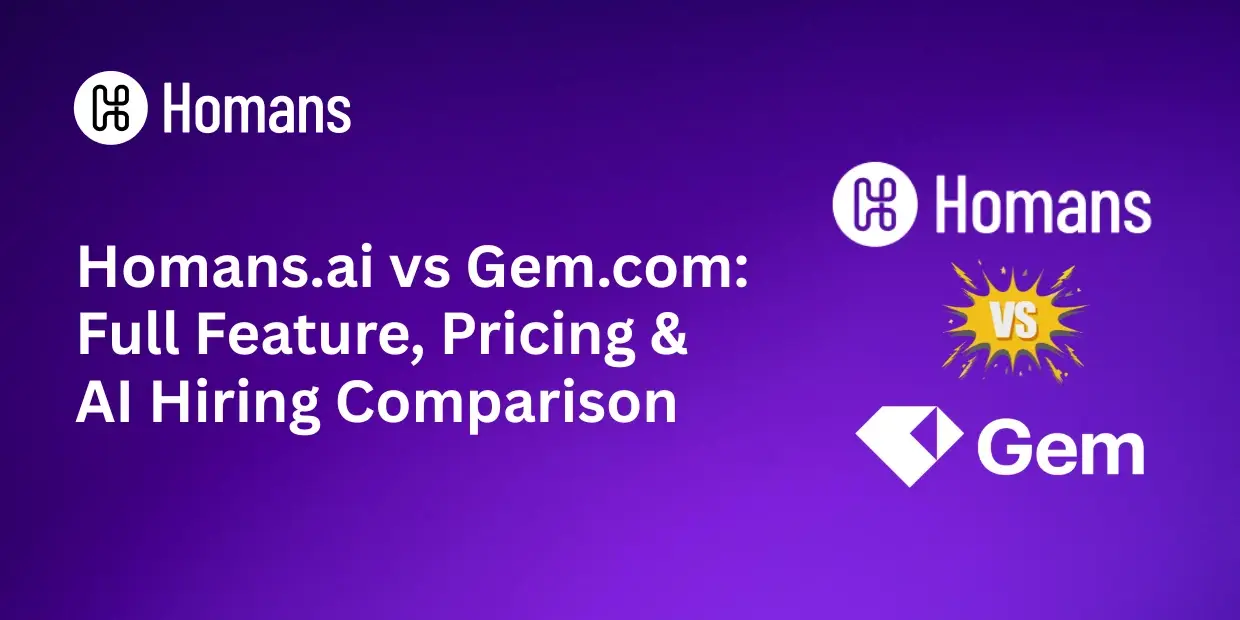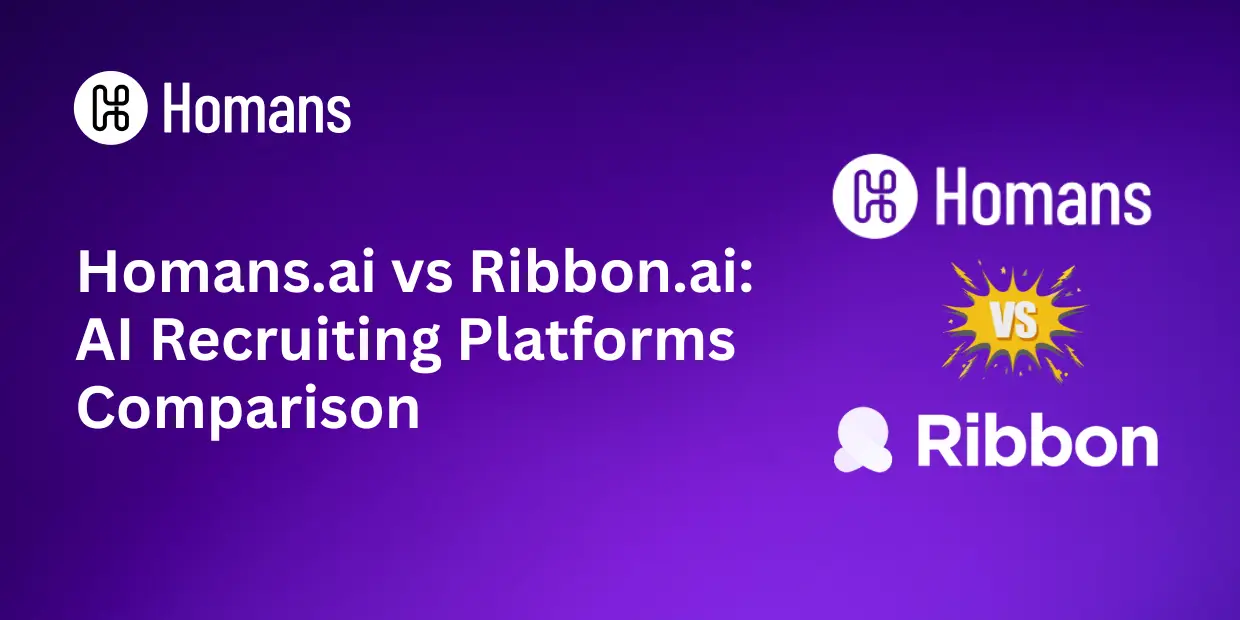Introduction: The Dawn of Intelligent Hiring
The HR landscape is experiencing a revolutionary transformation. Traditional hiring methods that once relied on manual processes, intuition, and time-intensive administrative tasks are rapidly giving way to intelligent, data-driven approaches. At the forefront of this evolution is talent automation – a game-changing approach that’s redefining how organizations discover, engage, and hire top talent.
For HR teams juggling increasing workloads, growing candidate volumes, and rising expectations for seamless experiences, talent automation isn’t just an option – it’s becoming essential for survival and success in today’s competitive talent market.
Understanding Talent Automation: Definition and Core Concepts
What is Talent Automation?
Talent automation refers to the strategic use of artificial intelligence, machine learning, and automated workflows to streamline and optimize various aspects of the talent acquisition process1. Rather than replacing human judgment, talent automation empowers HR professionals by handling repetitive, time-consuming tasks, allowing them to focus on strategic decision-making and meaningful candidate relationships.
In simple terms, talent automation uses technology to handle repetitive hiring tasks without human intervention, while software tools and AI work together to find, contact, screen, and manage job candidates.
The Evolution from Manual to Automated Hiring
The traditional recruitment process has historically been plagued by inefficiencies. Studies show that 57% of HR professionals report working beyond normal capacity due to understaffing4, while HR staff spend up to 57% of their time on administrative tasks5. These statistics highlight why automation has become not just beneficial, but necessary for modern HR operations.
Today’s talent automation represents a fundamental shift from:
- Manual resume screening to AI-powered candidate matching
- Reactive hiring to proactive talent pipeline building
- One-size-fits-all approaches to personalized candidate experiences
- Gut-feeling decisions to data-driven insights
The Business Case for Talent Automation
Compelling Statistics That Demand Attention
The numbers tell a powerful story about why talent automation is gaining momentum:
- 99% of talent acquisition teams use automation tools6
- 67% of recruiting professionals currently use automation technology
- Automation can reduce hiring time by up to 50%
- Cost reduction of 30-50% decrease in cost-per-hire
- 300% increase in sourced candidates
- 40% improvement in candidate engagement response rates
ROI and Efficiency Gains
The return on investment for talent automation can be substantial. Companies implementing automation report:
- Average time savings: 14 hours per week per recruiter
- Placement rates increased by more than 15% in organizations using blended human-AI assessment approaches
- Reduced time-to-hire by up to 70% through automated sourcing and screening
- 89.6% reduction in hiring time with AI-powered hiring tools
Core Components of Talent Automation
1. AI-Powered Candidate Sourcing and Screening
Modern talent automation begins with intelligent candidate discovery. AI-powered tools can:
- Aggregate candidate data from multiple sources including job boards, social media, and professional networks
- Parse resumes automatically using natural language processing to extract relevant skills, experience, and qualifications
- Score and rank candidates based on predefined criteria and job requirements
- Identify passive candidates who might be open to new opportunities
2. Automated Communication and Engagement
Maintaining candidate engagement throughout the hiring process is crucial. Automation tools enable:
- Personalized email sequences that adapt based on candidate behavior and preferences
- AI-powered chatbots that provide 24/7 support and answer frequently asked questions
- Automated status updates that keep candidates informed about their application progress
- Scheduled follow-ups that nurture long-term relationships with potential hires
3. Interview Scheduling and Coordination
One of the most time-consuming aspects of recruitment – interview scheduling – can be streamlined through:
- Calendar integration that automatically finds suitable time slots
- Self-service scheduling allowing candidates to book their preferred times
- Automated reminders and confirmation emails
- Rescheduling capabilities that handle changes without manual intervention
4. Assessment and Evaluation Automation
Modern talent automation includes sophisticated assessment capabilities:
- Skills-based testing that evaluates candidates’ technical competencies
- Behavioral assessments that gauge cultural fit and soft skills
- Video interview analysis using AI to evaluate responses and predict success
- Reference checking automation that streamlines the verification process
Key Benefits of Implementing Talent Automation
1. Dramatically Reduced Time-to-Hire
Traditional hiring processes often take 32-68 days depending on the role level. Automation can reduce this to mere minutes for initial screening and significantly accelerate the entire process. By automating repetitive tasks like resume parsing, initial screening, and interview scheduling, HR teams can focus on the most qualified candidates more quickly.
2. Enhanced Candidate Experience
75% of job seekers consider the application process an important factor in their decision to apply. Automation improves the candidate experience by:
- Providing immediate acknowledgment of applications
- Offering real-time status updates
- Enabling self-service capabilities for scheduling and information access
- Delivering personalized communication throughout the process
3. Improved Quality of Hire
Automation doesn’t just speed up hiring – it improves the quality of decisions. AI-powered tools can:
- Analyze candidate profiles and predict potential success based on historical data
- Reduce unconscious bias by standardizing evaluation criteria
- Identify skills gaps and recommend candidates who fill specific needs
- Predict cultural fit using behavioral analytics
4. Significant Cost Savings
Organizations implementing talent automation report substantial cost reductions:
- 30% reduction in cost-per-hire through AI recruitment augmentation
- Decreased administrative costs due to reduced manual processing
- Lower turnover rates from improved candidate-job matching
- Reduced dependency on external recruitment agencies
5. Scalability and Consistency
Automation enables HR teams to:
- Handle high-volume recruitment without proportional increases in staff
- Maintain consistent processes across different roles and departments
- Scale operations efficiently during peak hiring periods
- Standardize evaluation criteria ensuring fair and consistent assessments
Common Talent Automation Tools and Technologies
1. Applicant Tracking Systems (ATS)
Modern ATS platforms serve as the foundation for talent automation, offering:
- Centralized candidate management with automated workflows
- Resume parsing and keyword matching for efficient screening
- Integration capabilities with job boards and social media platforms
- Reporting and analytics for data-driven decision making
2. AI-Powered Sourcing Tools
These specialized platforms focus on finding and engaging candidates:
- Candidate discovery across multiple databases and platforms
- Automated outreach with personalized messaging
- Talent pipeline management for long-term relationship building
- Predictive analytics for identifying high-potential candidates
3. Interview and Assessment Platforms
Technology solutions that streamline the evaluation process:
- Video interviewing platforms with AI-powered analysis
- Skills assessment tools for technical and behavioral evaluation
- Automated scheduling and coordination systems
- Collaborative evaluation tools for hiring team coordination
4. Chatbots and Virtual Assistants
AI-powered conversational tools that enhance candidate interaction:
- 24/7 candidate support for questions and guidance
- Pre-screening conversations to gather initial information
- Application assistance to improve completion rates
- FAQ handling to reduce recruiter workload
Implementation Strategies: Getting Started with Talent Automation
Phase 1: Assessment and Planning
Before implementing automation, organizations should:
- Assess current processes to identify pain points and bottlenecks
- Define clear objectives such as reducing time-to-hire or improving candidate quality
- Establish success metrics including cost savings, efficiency gains, and quality improvements
- Allocate appropriate resources for technology, training, and change management
Phase 2: Technology Selection and Integration
Choosing the right tools requires careful consideration of:
- Integration capabilities with existing HR systems
- Scalability to support future growth
- User experience for both recruiters and candidates
- Support and training provided by vendors
- Cost-effectiveness and return on investment potential
Phase 3: Pilot Implementation
Start small and scale smart by:
- Beginning with one or two high-impact areas like resume screening or interview scheduling
- Testing with a limited number of roles or departments
- Gathering feedback from recruiters and candidates
- Measuring results against established success metrics
- Iterating and improving based on initial learnings
Phase 4: Full Deployment and Optimization
After successful pilot testing:
- Expand automation to additional processes and departments
- Provide comprehensive training to all users
- Establish ongoing monitoring and optimization procedures
- Continuously gather feedback and make improvements
- Stay updated with new features and capabilities
Best Practices for Successful Talent Automation
1. Maintain the Human Touch
Automation should enhance, not replace, human interaction12. Best practices include:
- Preserving personal connections at key stages of the hiring process
- Ensuring recruiters remain involved in final decision-making
- Providing human escalation options for complex situations
- Balancing efficiency with empathy in candidate communications
2. Focus on Data Quality and Security
Successful automation depends on quality data:
- Implement robust data governance practices
- Ensure compliance with privacy regulations like GDPR
- Maintain data accuracy through regular audits and updates
- Protect candidate information with appropriate security measures
3. Continuous Monitoring and Optimization
Automation is not “set it and forget it”:
- Track key performance indicators like time-to-hire and candidate satisfaction
- Monitor for bias in automated decision-making processes
- Regular system updates to maintain performance and security
- Ongoing training for HR teams on new features and best practices
4. Candidate-Centric Approach
Design automation with the candidate experience in mind:
- Provide clear communication about automated processes
- Offer multiple contact options for candidates who need assistance
- Ensure mobile-friendly interfaces and processes
- Gather regular feedback to improve the candidate journey
Overcoming Common Challenges
1. Resistance to Change
Challenge: Team members may be hesitant to adopt new technologies.
Solutions:
- Provide comprehensive training and support
- Demonstrate clear benefits through pilot programs
- Involve team members in the selection and implementation process
- Address concerns openly and honestly
2. Integration Complexity
Challenge: Difficulty integrating new tools with existing systems.
Solutions:
- Choose solutions with strong integration capabilities
- Work closely with IT teams during implementation
- Plan for adequate testing and troubleshooting time
- Consider phased implementation to minimize disruption
3. Data Quality Issues
Challenge: Poor data quality can undermine automation effectiveness.
Solutions:
- Implement data governance practices from the start
- Regular data audits and cleanup procedures
- Training for data entry and management
- Automated data validation where possible
4. Bias in Automated Systems
Challenge: AI systems can perpetuate or amplify existing biases.
Solutions:
- Regular bias audits of automated decision-making
- Diverse training data for AI models
- Human oversight of automated decisions
- Continuous monitoring and adjustment of algorithms
Future Trends in Talent Automation
1. Advanced AI and Machine Learning
The future of talent automation will feature:
- More sophisticated AI models that better understand context and nuance
- Predictive analytics that forecast hiring needs and candidate success
- Natural language processing that improves candidate interactions
- Computer vision for analyzing video interviews and assessments
2. Increased Personalization
Automation will become more personalized:
- Tailored candidate experiences based on individual preferences and behaviors
- Dynamic job recommendations that evolve with candidate interests
- Customized communication that reflects company culture and values
- Adaptive assessment that adjusts based on candidate responses
3. Integration with Emerging Technologies
New technologies will enhance automation capabilities:
- Virtual and augmented reality for immersive candidate experiences
- Blockchain for secure credential verification
- Internet of Things (IoT) for real-time data collection
- Voice recognition for hands-free candidate interactions
4. Ethical AI and Transparency
The industry will focus more on:
- Explainable AI that provides clear reasoning for decisions
- Bias detection and mitigation tools
- Transparency in automated processes for candidates
- Ethical guidelines for AI use in hiring
Measuring Success: Key Performance Indicators
1. Efficiency Metrics
Track improvements in process efficiency:
- Time-to-hire reduction
- Cost-per-hire decrease
- Recruiter productivity improvements
- Process cycle time reductions
2. Quality Metrics
Measure improvements in hiring quality:
- Quality of hire scores
- New hire retention rates
- Performance ratings of automated hires
- Hiring manager satisfaction scores
3. Candidate Experience Metrics
Monitor candidate satisfaction:
- Candidate Net Promoter Score (NPS)
- Application completion rates
- Candidate feedback scores
- Time-to-response metrics
4. Business Impact Metrics
Assess overall business impact:
- Return on investment (ROI)
- Revenue per hire
- Time-to-productivity for new hires
- Diversity and inclusion improvements
Conclusion: Embracing the Future of Talent Acquisition
Talent automation represents a fundamental shift in how organizations approach hiring. It’s not about replacing human judgment with machines, but rather about empowering HR professionals to focus on what they do best – building relationships, making strategic decisions, and creating exceptional candidate experiences.
The statistics are clear: organizations that embrace talent automation are seeing significant improvements in efficiency, cost-effectiveness, and quality of hire. With 92% of companies planning to increase their AI investments13 and the global HR technology market expected to reach $39.90 billion by 20295, the question isn’t whether to adopt talent automation, but how quickly and effectively you can implement it.
For HR teams ready to embrace this transformation, the key is to start with clear objectives, choose the right tools, implement gradually, and continuously optimize based on results. By taking a strategic, human-centered approach to talent automation, organizations can build more efficient, effective, and engaging hiring processes that attract top talent and drive business success.
The future of talent acquisition is automated, intelligent, and human-centered. The organizations that recognize this today will be the ones that thrive in tomorrow’s competitive talent landscape.
Ready to transform your talent acquisition process? Start by assessing your current challenges, identifying automation opportunities, and taking the first step toward a more efficient, effective, and engaging hiring experience.

